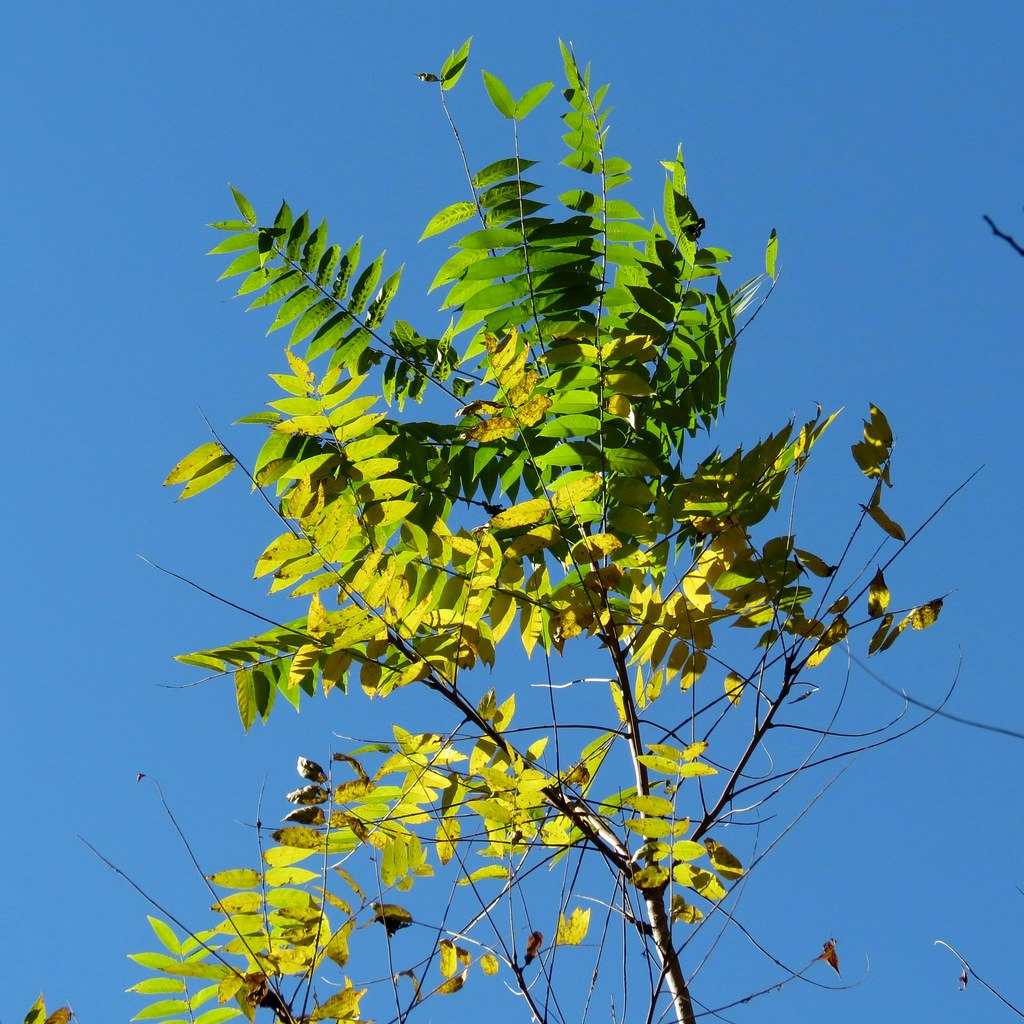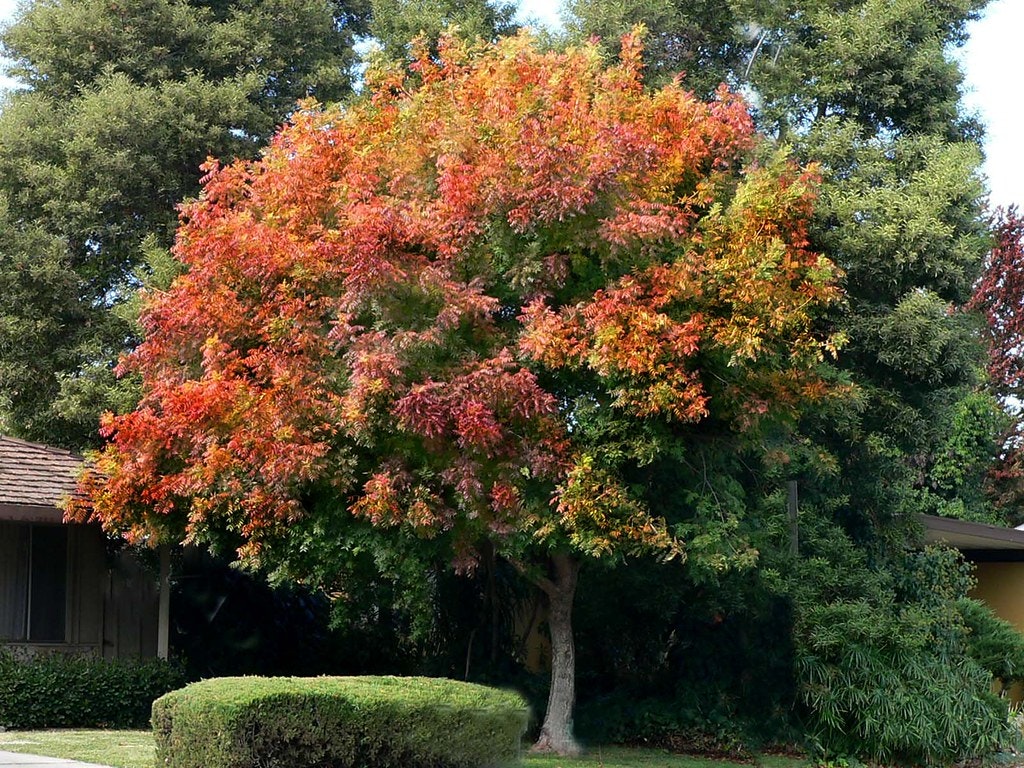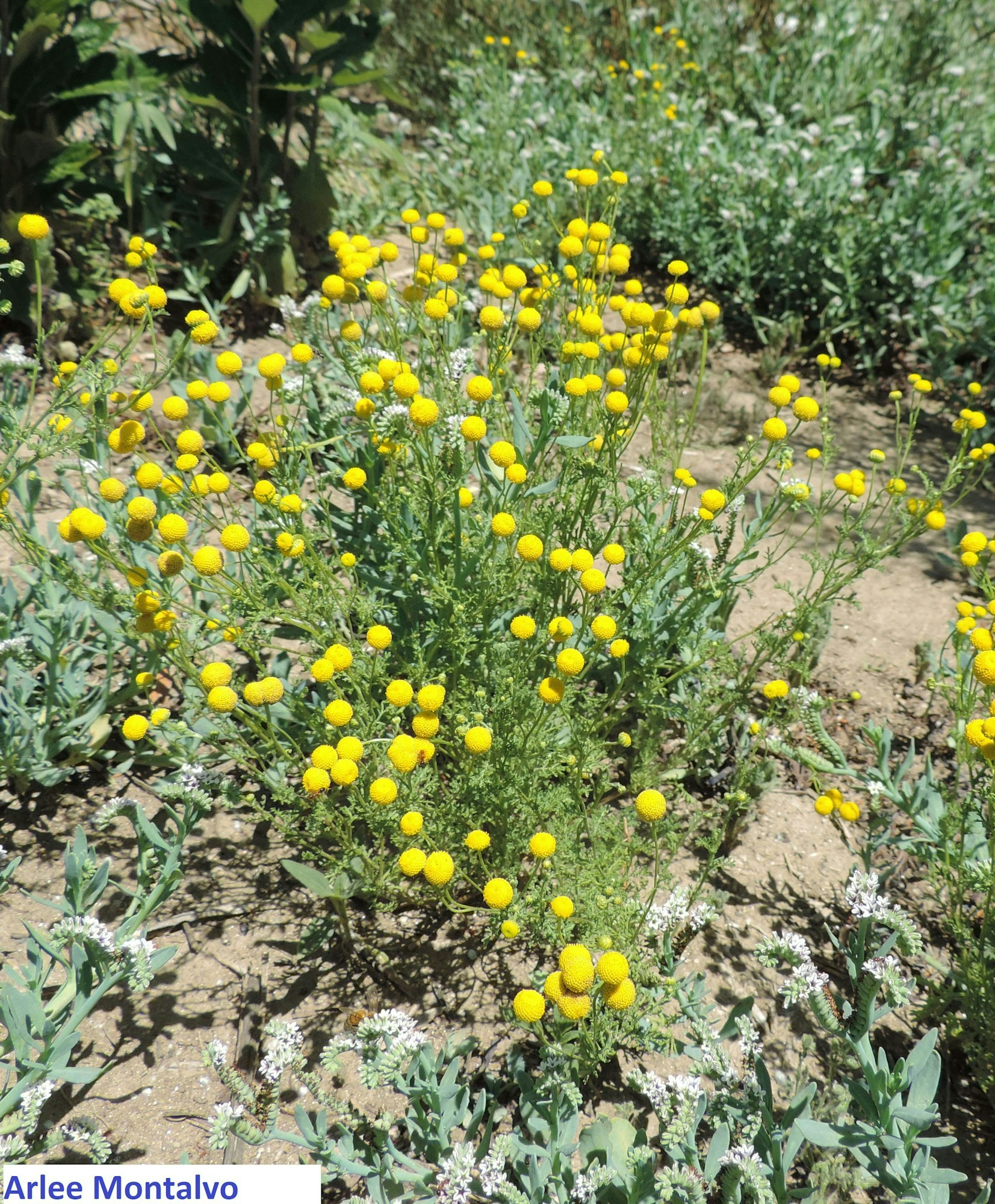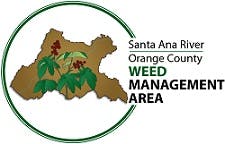Non-Native Plants
What is a Non-Native Plant?

Non-native species are species that have been introduced into new areas that have not historically been part of their native range. Non-native plants can be introduced deliberately, usually by humans, or accidently. Deliberate introductions are often made because a plant is desired for horticultural reasons. Accidental introduction often happen when seeds or plant materials are carried over on shipping containers or by travelors from other countries.
Tree of Heaven is a good example of a non-native plant commonly found in Southern California. It is native to China and was first brought from China to the United States in 1784 to be used as a garden specimen. However, Tree of Heaven soon lost favor when people realized it was foul smelling and was able to produce incredibly fast growing suckers. Eradication efforts are difficult and very time consuming because the tree resprouts vigorously when it is cut, making its eradication difficult and time-consuming.
Non-native plants are not ALL bad

The biggest concern with non-native species is that they will become invasive. However, not all plants that are non-native become invasive. In order to become invasive, plants must be introduced and cause serious economic environmental harm or harm to human health. Some non-native species do not become invasive and therefore are not necessarily bad.
An example of this is the Chinese pistache tree. The Chinese pistache tree is native to central and western China and it was brought to the US for is horticultural value. The tree is often used in urban settings, such as along streets and neighborhoods, due to its attractive fruit, autumn foliage, drought tolerance and ability to survive in harsh environments. While the pistachhe tree in non-native, it has never reached the level of being invasive.
Naturalized Plants
Sometimes non-native plants can become naturalized. In order for a non-native plant to become naturalized it must be able to grow and reproducce on its own without human intervention such as watering or weed control. Not all plants that have originated in other places are hardy enough to become naturalized. Naturalized plants are a problem when they become invasive.
Invasive Plants
What is an Invasive Plant?
The California Invasive Plant Council (Cal-IPC) Cal-IPC defines invasive plants as the following: plants that are not native to an environment, and once introduced, they establish, quickly reproduce and spread, and cause harm to the environment, economy, or human health.

Over the last decade, invasive plants have come to the forefront of agricultural and environmental issues. Due to these plants’ aggressive growth habits, they have overtaken many natural areas and now pose a threat to the native habitats in which they grow. Many local agencies have been working on removal over the last several years, with the District working on removal in small target areas during the past decade.
Although some invasive species may be visually attractive, these plant species do not provide quality habitat or a food source for native wildlife species. Many of these plants are out-competing the native plants that some endangered birds need for nesting. This increases the potential for damage to both the plant and animal communities and local extinctions of plants and wildlife.
What makes a plant invasive?
When plants that evolved in one region of the globe are moved to another region, a few of them flourish, crowding out the native vegetation. Invasive plants have a competitive advantage because they are no longer controlled by their natural predators or competitors, so they quickly spread out of control. Invasive plants also damage wildlands by increasing wild fire and flood danger, consuming valuable water, degrading recreational opportunities, and destroying productive range and timberlands.
According to the USDA to be considered invasive, a plant must be introduced and cause "economic or environmental harm or harm to human health" and demonstrate the following characteristics.
- They can survive a large variety of habitats or environmental conditions.
- They outcompete native species for resources like food and water.
- They often lack natural enemies (predators, competitors, and parasites) in their new habitat.
- They grow and reproduce rapidly.
Control of Invasive Species
The RCRCD works to remove and control invasive plants from all of their conservation easements and fee title lands. Management of invasive species is done through a variety of techniques which include hand weeding, cut and stump treatment and herbicide applications when necessary. Herbicide applications are done by trained and licensed applicators. Along with state and local partners, the RCRCD continuously monitors for new and emergent invasive species and stays up to date on current control methods.
These are just a few of the dozens of invasive plants that are being targeted for removal within the District service area.

- Giant reed (Arundo donax)
- Castor bean (Ricinus communis)
- Stinknet (Oncosiphon piluliferum)
- Sahara Mustard (Brassica tournefortii)
- Salt Cedar (Tamarix ramosissima)
- Russian Thistle (Salsola tragus)
- Mustard species
Due to the aggressive nature of these exotic, non-native plants, eradication takes many years, with some plants requiring as much as 10 years of control efforts. Integrated pest management (IPM) is also being used to control some species. IPM uses a mixture of chemical, mechanical, and biological controls to manage pest plants. This helps reduce the dependence on chemicals alone, and gives the management agencies and contractors better ability to control costs.
A 20 year control plan for the Santa Ana River Watershed is in place for the management of Giant Reed (Arundo donax). The extensive plan includes cooperation with other Conservation Districts through the Santa Ana Watershed Association (SAWA). Each District works within its boundaries to control Giant Reed along upstream tributaries and the Santa Ana River main stem.


.png?ixlib=rb-1.1.0&or=0&w=720&h=720&fit=max&auto=format%2Ccompress&s=67caba4c68608c8a9df81daeb96f6208)